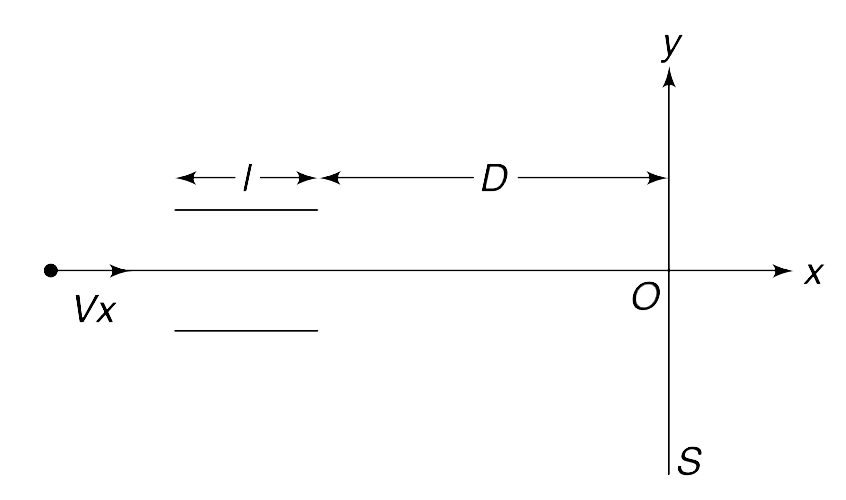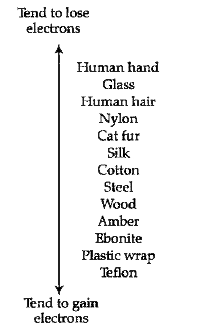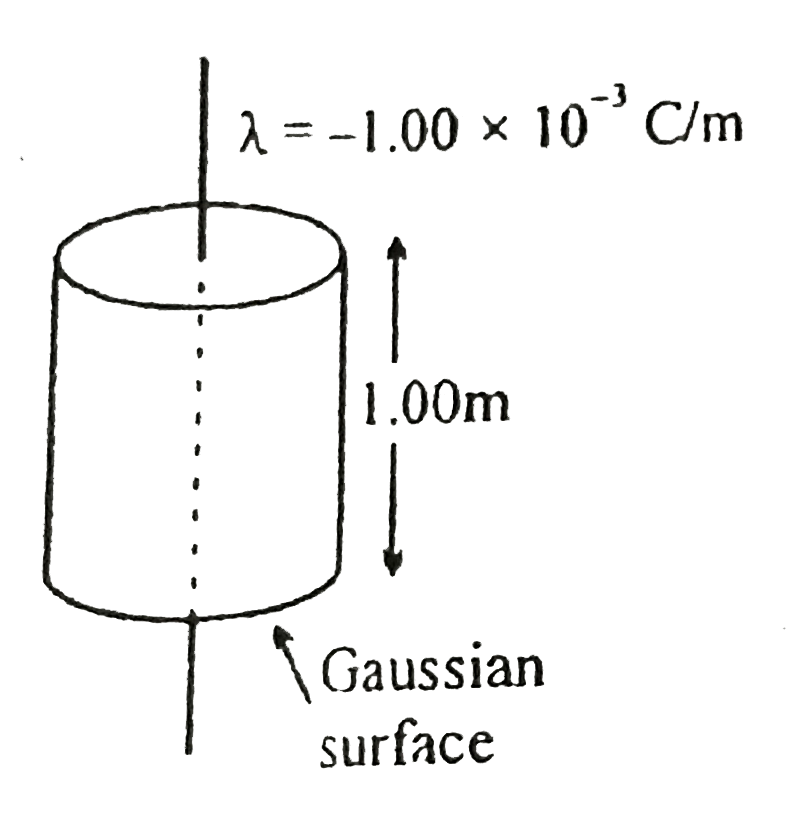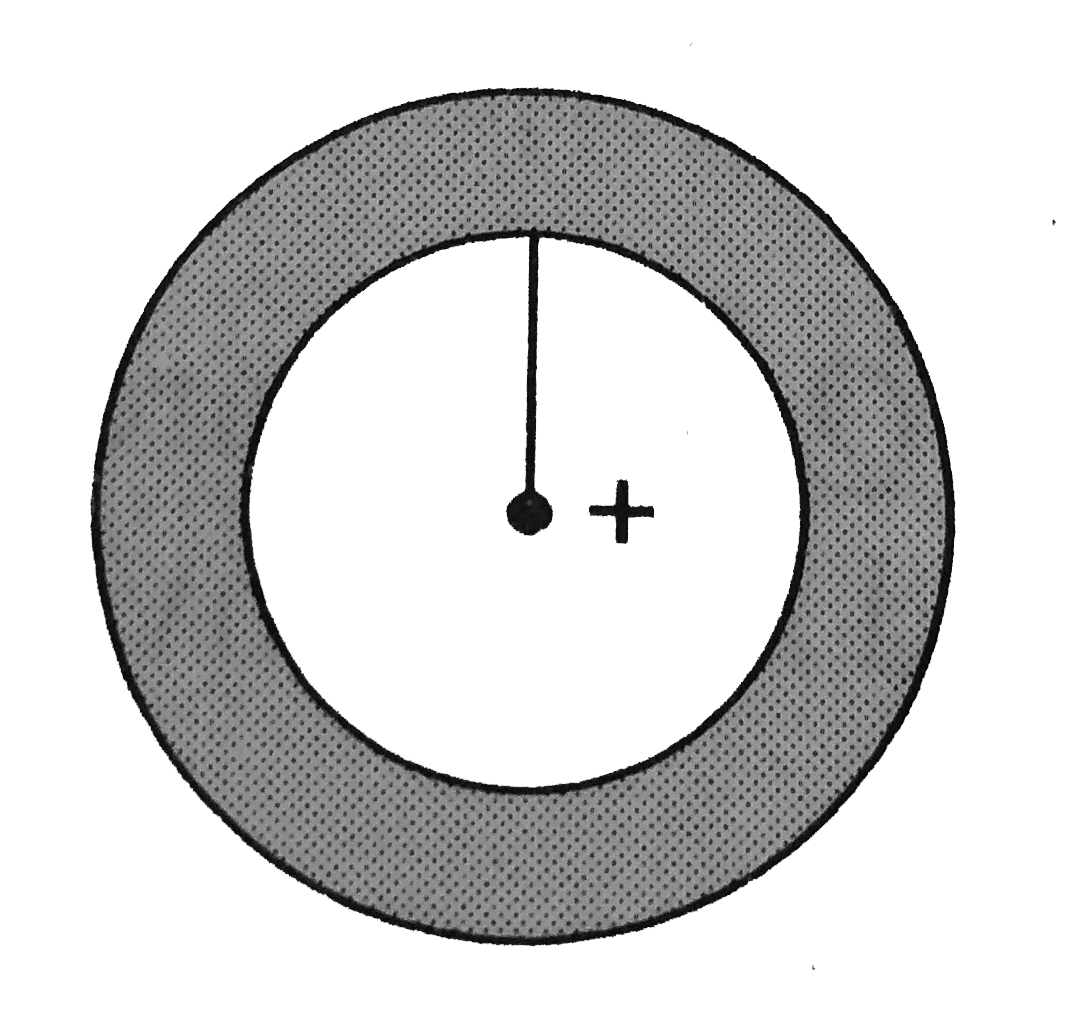Lightning caused by an electric discharge from a negatively-charged cloud to a positively charged ground is often accompanied by another bolt of lightning in the reverse direction. This is called a 'return stroke and it travels from the Earth to the cloud. Discuss why and how a return stroke is caused.
Step-by-Step Text Solution:
1. Understanding Lightning: Lightning is a natural phenomenon that occurs due to the discharge of electricity in the atmosphere. It typically happens between a negatively charged cloud and the positively charged ground.
2. Formation of Charge: During a thunderstorm, the movement of air causes the separation of charges within the cloud. The upper part of the cloud becomes positively charged, while the lower part becomes negatively charged. The ground beneath the cloud also becomes positively charged due to the influence of the negatively charged cloud.
3. Initial Discharge: When the electric potential difference between the negatively charged cloud and the positively charged ground becomes large enough, a discharge occurs in the form of a lightning bolt. This is the initial lightning strike that travels from the cloud to the ground.
4. Return Stroke: After the initial discharge, the ground is left with a positive charge. The electric field created by this positive charge attracts electrons from the ground back up to the cloud. This movement of positive charge from the ground to the cloud is what we refer to as the return stroke.
5. Visible Flash: The return stroke is a bright flash of light that is often seen as lightning. It occurs because the rapid movement of charge generates a significant amount of energy, which is released in the form of light and heat.
6. Conclusion: The return stroke is essentially a flow of positive charge from the Earth back to the cloud, following the initial discharge of lightning. This process is a crucial part of the overall phenomenon of lightning and helps to balance the charges in the atmosphere.
Topper's Solved these Questions
- SOME NATURAL PHENOMENABOOK - PEARSON IIT JEE FOUNDATIONCHAPTER - SOME NATURAL PHENOMENAEXERCISE - CLASSROOM CORNER (ASSERTION-REASON TYPE QUESTIONS)
3 Videos
- SOME NATURAL PHENOMENABOOK - PEARSON IIT JEE FOUNDATIONCHAPTER - SOME NATURAL PHENOMENAEXERCISE - CLASSROOM CORNER (SHORT ANSWER TYPE QUESTIONS)
27 Videos
- SOME NATURAL PHENOMENABOOK - PEARSON IIT JEE FOUNDATIONCHAPTER - SOME NATURAL PHENOMENAEXERCISE - CLASSROOM CORNER (COMPREHENSION-BASED QUESTIONS)
13 Videos
- SOME IMPORTANT ELEMENTS AND THEIR COMPOUNDSBOOK - PEARSON IIT JEE FOUNDATIONCHAPTER - SOME IMPORTANT ELEMENTS AND THEIR COMPOUNDSEXERCISE - Level-3
10 Videos
- SYNTHETIC FIBRES AND PLASTICS BOOK - PEARSON IIT JEE FOUNDATIONCHAPTER - SYNTHETIC FIBRES AND PLASTICS EXERCISE - COMPETITION CORNER (Choose the correct option)
53 Videos
Similar Questions
(a) A charge particle travelling along positive x direction with speed Vx enters a region of width having a uniform electric field E in positive y direction. A screen is kept, at a distance D(>>l) from the region of the field, in yz plane. Find the y co-ordinate of the point where the particle strikes the screen. Charge and mass of the par- ticle is + q and m respectively.
(b) The electric field in the region is replaced with a uniform magnetic field B in negative z direction. Now calculate the y co-ordinate of the point on the screen where the particle hits it. Assume deflection due to field to be small and D>>l.

(c) Now the field region is filled with a uniform electric (E) and magnetic field (B) both directed in positive y direction. A beam of protons and some other positive ion enters the region trav- elling along x direction. The particles hit the screen along two curved paths. Explain. Draw the two curves in yz plane and point out which one represents the protons.
View SolutionAssume that clouds are distributed around the entire earth at a height of 3000m above the ground. The atmosphere can be modeled as a spherical capacitor with the earth as one plate and the cloud as other. When the electric field between the earth and the cloud becomes large, the air begins to conduct and the phenomena is called lightning. On a typical day 4×105C of positive charge is spread over the surface of the earth and equal amount of negative charge is there on the cloud. Resistivity of the air is ρ=3×1013Ωm and radius of the earth =6000km.
(a) Find the resistance of the air gap between the earth’s surface and cloud.
(b) Estimate the potential difference between the surface of the earth and the cloud
(c) In how much time the capacitor formed between the earth and the cloud will lose 63 % of the charge ?
View Solution
Knowledge Check
The clouds consist of charged particles of water dispersed in air. Some of them are + vely charged, others are negatively charged. When + vely charged clouds come closer they have cause lightening and thundering whereas when + ve and –ve charged colloids closer they cuase heavy rain by aggregation of minute particles. It is possible to cause artificial rain by throwing electrified sand or silver iodide from an aeroplane and thus coagulation the mist hanging in air.
Clouds are colloids solution ofAliquid in gasBgas in liquidCliquid in liquidDsolid in liquidThe clouds consist of charged particles of water dispersed in air. Some of them are + vely charged, others are negatively charged. When + vely charged clouds come closer they have cause lightening and thundering whereas when + ve and –ve charged colloids closer they cuase heavy rain by aggregation of minute particles. It is possible to cause artificial rain by throwing electrified sand or silver iodide from an aeroplane and thus coagulation the mist hanging in air.
Electrical chimneys are made on the principle ofAElectroosmosisBElectrophoresisCCoagulationDAll of theseAssertion : Lightning is caused by the accumulation of charges in clouds.
Reason : The process of meeting of negative and positive charges to release huge amount of energy is called electric discharge.AIf both assertion and reason are true and reason is the correct explanation of assertion.BIf both assertion and reason are true but reason is not the correct explanation of assertion.CIf assertion is true but reason is false.DIf assertion is false but reason is true.
Read the following text and answer the following questions on the basis of the same
Tribo-electric series:
The tribo-electric series is a list that ranks materials according to their tendency to gain or lose electrons. The process of electron transfer as a result of two objects coming into contact with one another and then separating is called tribo-electric charging. During such an interaction, one of the two objects will always gain electrons (becoming negatively charged) and the other object will lose electrons (becoming positively charged). The relative position of the two objects on the tribo-electric series will define which object gains electrons and which object loses electrons.
In tribo-electric series, materials are ranked from high to low in terms of the tendency for the material to lose electron. If an object high up on this list (Glass, for example) is rubbed with an object low down on the list (Teflon, for example), the glass will lose electrons to the teflon. The glass will, in this case, become positively charged and the teflon will become negatively charged. Materials in the middle of the list (steel and wood, for example) are items those do not have a strong tendency to give up or accept electrons.

Materials in the upper position has ______ tendency to become positively charged.
View SolutionThe visible portion of a lightning strike is preceded by an invisible stage in which a column of electrons extends downward from a cloud to the ground Assume the linear charge density along the column is 1.00×10−3C/m Treat the column of charge as if it were straight and infinitely long. At what distance (in m) from the column of electrons does the electric field have a magnitude of 3.00×106V/m the dielectric strength for air? This is an estimate of the radius of a visible lightning bolt. (Round off to nearest integer) (value of ∈0is8.85×10−12C2/Nm2)

View SolutionOn the basis of your understanding of the following paragraph and the related studied concepts.
An electric dipole is a pair of equal and opposite point charges q and -9 separated by a distance '2a'. The total charge of the electric dipole is obviously zero but the field of the electric dipole at a point is non-zero because electric fields due to + qand - q charges at the point do not exactly cancel out. Electric field of a dipole, at large distances, depends on the product 'qa'. So we define a term dipole moment vector →p of an electric dipole as →p=q(2a) and its direction is along the line from q to + q charge. The dipole field at large distances fall off as 1r3. Further, the magnitude and direction of the dipole field depends not only on the distance r but also on the angle between the position vector →r and the dipole moment →p.
Concept of electric dipoles is very significant for different materials. In most molecules, the centres of positive charges and of negative charges exactly coincide and their dipole moment is zero. However they develop a dipole moment when an electric field as applied. Such molecules are termed non-polar molecules. But in some molecules, the centres of positive charges do not exactly coincide with that of negative charges and the molecules has a permanent dipole moment even in the absence of an electric field. Such molecules are called polar molecules. Various materials give rise to interesting properties and important applications in the presence or absence of electric field.
Is the electric field due to a charge configuration with total charge zero necessarily zero ? Give an illustration in support of your answer.
View SolutionOn the basis of your understanding of the following paragraph and the related studied concepts.
An electric dipole is a pair of equal and opposite point charges q and -9 separated by a distance '2a'. The total charge of the electric dipole is obviously zero but the field of the electric dipole at a point is non-zero because electric fields due to + qand - q charges at the point do not exactly cancel out. Electric field of a dipole, at large distances, depends on the product 'qa'. So we define a term dipole moment vector →p of an electric dipole as →p=q(2a) and its direction is along the line from q to + q charge. The dipole field at large distances fall off as 1r3. Further, the magnitude and direction of the dipole field depends not only on the distance r but also on the angle between the position vector →r and the dipole moment →p.
Concept of electric dipoles is very significant for different materials. In most molecules, the centres of positive charges and of negative charges exactly coincide and their dipole moment is zero. However they develop a dipole moment when an electric field as applied. Such molecules are termed non-polar molecules. But in some molecules, the centres of positive charges do not exactly coincide with that of negative charges and the molecules has a permanent dipole moment even in the absence of an electric field. Such molecules are called polar molecules. Various materials give rise to interesting properties and important applications in the presence or absence of electric field.
In which direction is the magnitude of electric field due to a short dipole (i) maximum, (ii) minimum ? Write expression for the same.
View SolutionAn electrically isolated hollow (initially uncharged), conducting sphere has a small positively charged ball suspended by an insulating rod from its inside surface (see diagram).

This causes the inner surface of the sphere to become negatively charged. When the ball is centred in the sphere, the electric field outside the conducting sphere is
View Solution
